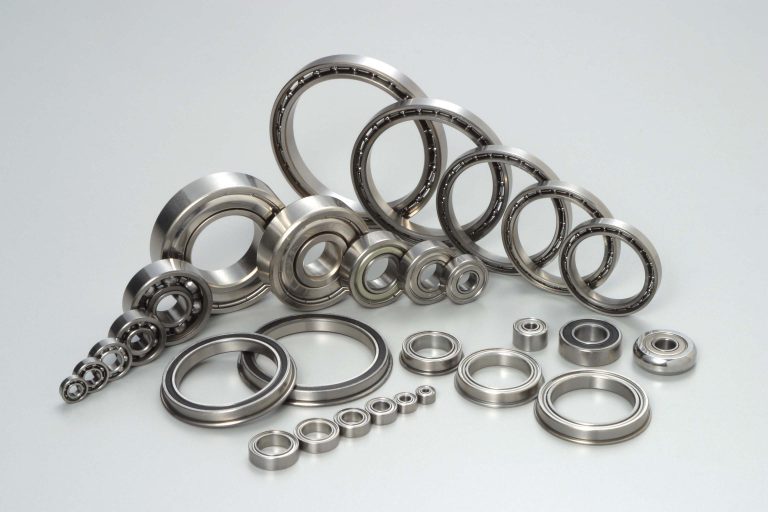We’re answering all of your questions about thin section bearings in this three-part series. Click here if you missed part I.

When should radial type thin section bearings be used?
Radial type are used when loading is predominantly in the radial direction. They can also support limited axial and reversing loads.
For this type, often, the best choice is available from standard series of bearings such is the 6700, 6800, or 6900 series. These bearings are produced in metric sizes starting with a 10mm bore. The 6700 series is the “thinner” of these series and the 6900 series has the thickest cross section.
When should angular contact type thin section bearings be used?
Angular contact types are used when there are higher thrust and axial loads. These types of bearings when used as duplexed pairs (matched sets) provide for increased load capacity and stiffness, as well as high rotational accuracy.
What are 4-point contact bearings?
4-point contact bearings have a unique raceway design that allows one bearing to handle radial, thrust, and over turning moment loads. Viewing the cross section, the raceway has the shape of a “gothic arch” instead of a true radius. This creates 4 points of contact with the balls and raceway. Designers have to option of choosing a one 4 point contact bearing arrangement instead of two angular contact bearings. This saves on space and weight.
What are their requirements in instruments?
Many thin section ball bearing applications have functional requirements which allow for their use in “instruments” in the broadest sense of the word. These applications generally have demanding requirements with respect to rotational accuracy, repeatability, and torque. The tolerances of instrument bearings are generally equal to ABEC 5, or 5T, or better. In addition, they meet two or more of the following requirements:
- low or uniform starting or running torque
- smooth running, low vibration, low noise
- a definite contact angle or preload, or both
- high cleanliness requirements
Are there steel varieties available?
Thin section bearings are commonly available in both 52100 chrome steel as well as 400 series martensitic stainless steel (for use if corrosion is of concern).
Can they be protected from harsh environments?
Different sealing options are available that provide protection from contaminants.
What precision classes are available?
Various precision classes are available up to ABEC 5T, or 7F.
Coming up in part 3, we look at techniques/tools for installation, applications and further considerations. In the meantime, if you have questions about thin section bearings – or any bearing products – our engineers and bearing experts are ready to help, contact them here.

